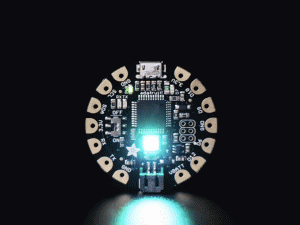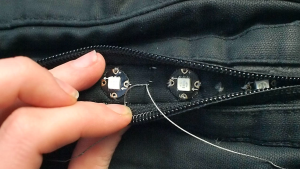The Adafruit Flora is a new addition to the foray of microcontrollers out in the market now, alongside Arduinos and Raspberry Pi’s.

The Flora is made specifically to be compatible with wearables, with holes drilled into the contacts where conductive thread can be sown into to create circuits. This is one large leap in the steps that have been made to make wearable technology affordable and widespread.
Along with the Adafruit Floras have come their NeoPixel RGB LED lights and a plethora of resistors and specialized sensors that are water-resistant. Below is a round band of 12 RGB NeoPixel LED lights that are individually programmable.

The Flora has many uses, and below is a showcase of all the things that can be done with them, beginning with the final project that Abhiniti Mahendrakar and I made:

A GPS Jacket:



And a tie that lights up to the amplitude from a microphone.

Now while those may be entertaining, and some useful, this is just an introduction to how small we can make these controllers and the processing potential they hold for us in the future.


